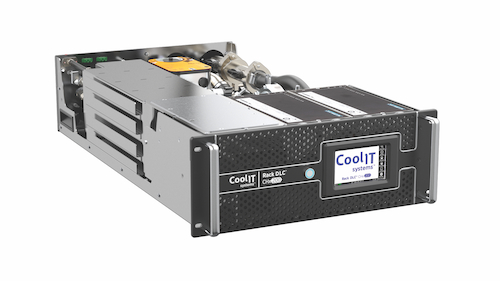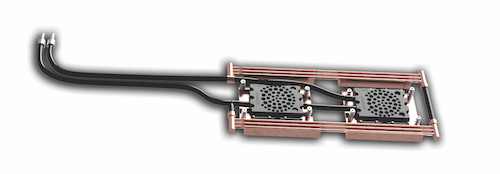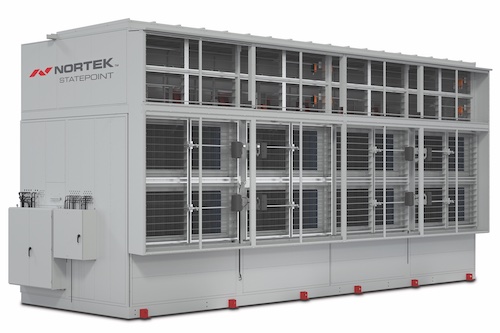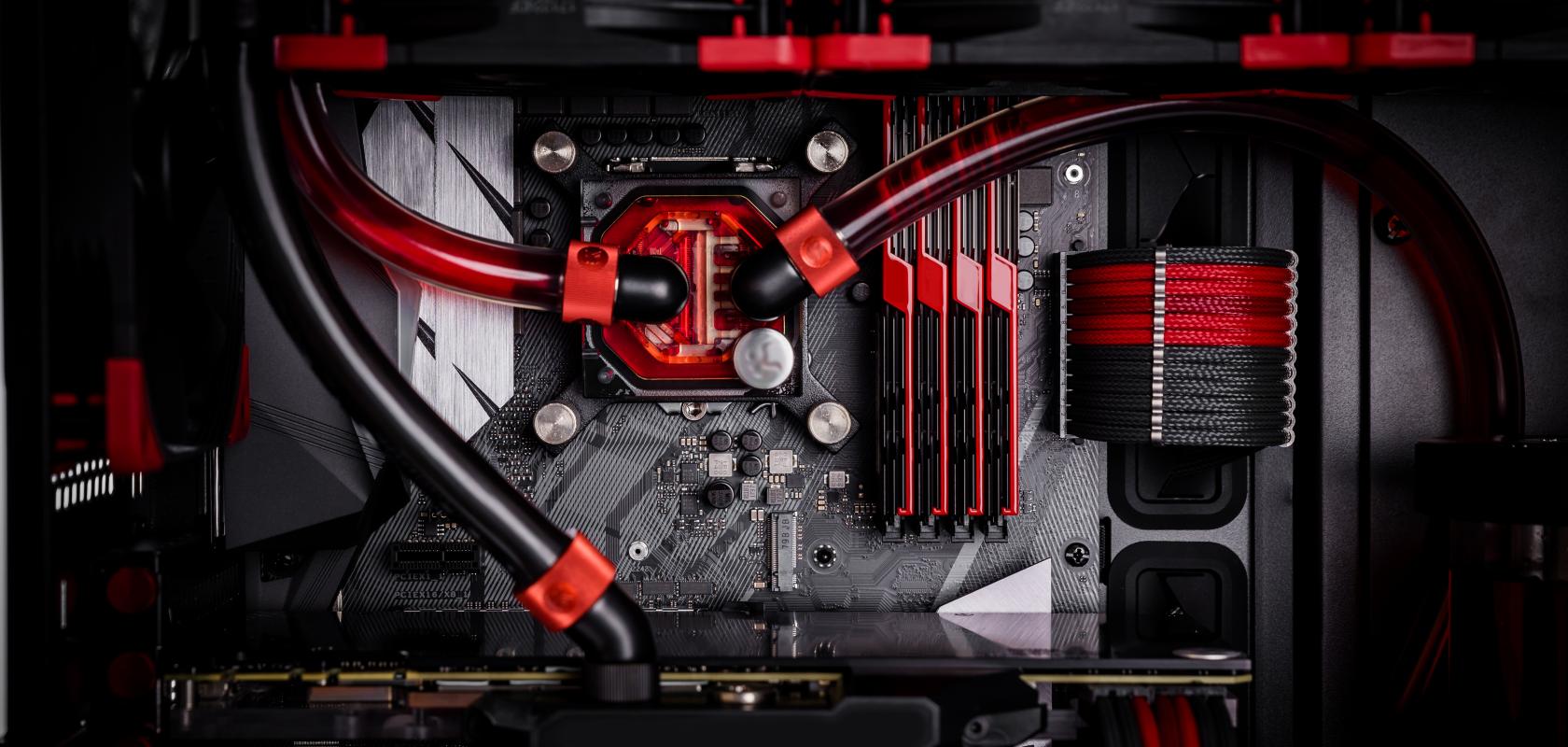A round-up of the latest cooling technologies for scientists using HPC to support their research.
Cooling technologies continue to adapt to meet the changing demands and requirements of HPC users. Alongside growing demand for heat-dissipating products, other factors in choosing cooling solutions include increasing server density, infrastructure, costs, maintenance and support. This article highlights several providers delivering methods from RDHx to direct liquid cooling, passive loop cooling and immersion cooling - accommodating HPC users with varied requirements.
Start by determining the total power requirements for a server. This helps to estimate how much heat you will need to dissipate. For single CPU servers, RDHx or liquid cooling will most likely be sufficient; dual socket servers with power-hungry CPUs or multiple GPUs will draw substantially more power. These require more complex technologies such as direct liquid cooling, passive loop cooling or even immersion cooling.
However, while underlying power requirements are key to choosing the right solution, there are other factors; available data centre space, infrastructure, maintenance and support - along with technologies such as chillers or evaporative cooling - all need to be considered to find the right solution.
Featured cooling product: CHx200

Complete research with confidence as you benefit from decreased system downtime and increased capabilities. The CHx200 is a rack-based coolant distribution unit (CDU) built for today’s most demanding datacenter requirements. Coupling this CDU with CoolIT’s passive coldplate loops (PCL) containing patented split-flow coldplates, the CHx200 manages 200kW of heat load, providing cooling for up to 200 servers in a remarkably small 4U space.
The CHx200 contains an extremely efficient heat exchanger capable of utilising ASHRAE W4 warm water to manage server heat. As a result, users can expect a significant reduction in data center OPEX, allowing spending to be shifted to additional computing purchases.
Its Command2 Control System intelligently manages the CHx200’s centralised pumping system, ensuring target flow and pressure settings are maintained. The centralised pumping system provides superior reliability, performance and serviceability compared to distributed pumping systems (pumps attached to each cold plate).
Find out more about the CHx200 from CoolIT's website.
Featured cooling product: Motivair Liquid Cooling

Artificial Intelligence and Big Data are shifting quickly from research labs to global enterprises. These groundbreaking technologies are accelerating; with this comes a growing need for increased CPU, GPU, & FPGA power densities. Tomorrow’s chips need resilient, scalable direct liquid cooling to achieve peak performance points.
Motivair’s exclusive end-to-end liquid cooling systems are your single-sourced, direct-to-chip providers for stainless steel manifolds, Dynamic Cold PlatesTM, cooling loops and additional liquid cooling technology.
Unique, thermally targeted designs ensure even flow across complex systems, allowing for increased system performance and precision cooling at chip hot spots. Innovative liquid cooling technology minimises the possibility for leaks, while balancing timely serviceability, breakthrough thermal performance and mitigating pressure loss.
A clean, custom configuration and compact design seamlessly integrate into your existing architecture, regardless of OEM chassis configuration.
Find out more about liquid cooling from Motivair's website.
Featured cooling product: Statepoint

Data centre professionals looking to build the next big thing, need a cooling system that can keep up. Nortek Data Center Cooling StatePoint Indirect Cooling Technology brings reliability and optimum performance to any data centre, regardless of location or climate.
This revolutionary technology delivers a solution that is better for business and the environment. StatePoint uses an indirect evaporative cooling method with a unique semi-permeable membrane exchanger that completely separates water from the air stream to prevent cross contamination. The result – significant power and water savings (as much as 30 per cent) and minimised risk for biological growths, such as Legionella.
StatePoint easily integrates with a variety of systems to offer a complete cooling solution. The unit can use recycled water, interface with waste heat recovery systems and operate off wind and solar power to help data centres take the next step toward net-zero operation.
Find out more about Statepoint from Nortek's website.
Cooling products on the market now
Transitioning data centres to immersion cooling with 3M fluids allows businesses to prepare for the future, managing costs and impacts on natural resources.
Aqua Cooling supports users who need hardware to accurately cool equipment, providing comfortable temperatures for people to perform at their best. Controlling temperatures for an educational establishment or research facility can be challenging.
Through technical expertise and a range of equipment, Aqua Cooling delivers reliable energy and cost-efficient solutions – whatever your challenge.
Aquarius’ fixed cold plate warm water cooling is an effective solution, combining efficient, dense, reliable and easy-to-use server cooling with the industry’s best TCO and ROI.
Aquila’s Dual Processor Intel Xeon Aquarius server systems offer performance, reliability and density. With industry-topping efficiency of 95 per cent, adopting Aquarius’ liquid-cooled computing will markedly enhance your data centre’s PUE while drastically reducing operating expenses.
Asperitas offer solutions equipped with 24 server cassettes designed, optimised and certified for immersion cooling. Offering high performance and density compute for CPU and GPU workloads. All solutions can be warm water cooled and offer 100 per cent of IT energy ready for reuse.
Calyos are leaders in the design, development and manufacturing of passive loop heat pipes. Their solutions give you freedom from thermal limitations, unlocking the best performance from your components and products.
The award-winning ColdLogik Rear Door method is best described by the term ‘Air Assisted Liquid Cooling’ or AALC. AALC allows for the best of both worlds; it enables higher densities in standard data centre designs, bringing efficiency to your next retrofit or build project.
Ambient air is drawn into the rack via the IT equipment fans. Hot air is expelled and pulled over the heat exchanger, assisted by EC fans mounted in the RDC chassis. Exhaust heat transfers into fluid within the heat exchanger; the newly chilled air is expelled into the room at or below a temperature chosen for sensible cooling.
CoolIT Systems Direct Liquid Cooling (DLC) uses the thermal conductivity of liquid to provide dense cooling to targeted areas. Using DLC and warm water, dependence on fans and expensive air handling systems is drastically reduced. This results in much higher rack density, overall reduced power use and significantly higher potential performance.
An EcoCooling direct evaporative cooling system can reduce IT or data centre cooling costs by up to 90 per cent, comply with ASHRAE 9.9 and produce a PUE (Power Usage Effectiveness) of under 1.1.
In Nordic and Arctic climates where temperatures never exceed 25°C, fresh air can be used all year round to cool a data centre. However, in warmer conditions, or when cooler inlet temperatures, are required, free cooling alone cannot meet required conditions. Supplementary cooling is required on hotter days. EcoCooling uses direct evaporative cooling in their products as a reliable, energy efficient alternative to refrigeration.
Green Revolution Cooling’s (GRC) patented immersion cooling technology creates favorable budget economics, reducing server energy by 10 to 20 per cent. GRC’s data centre solutions future-proof your operation, reliably cooling up to 100 kW/rack. Support for high rack densities allows for more compute per rack; the absence of hot/cold aisles allows for back-to-back racks, saving valuable space in your data centre.
Capturing nearly 100 per cent of the heat generated from systems, the GPU-rich Ku:l Micro Data Centre solution from Icetope offers extreme cooling performance and high-grade heat recovery. Precision delivery of dielectric coolant cools hotspots directly. Without front-to-back air cooling and bottom-to-top immersion constraints, no space is wasted.
Encapsulating Lenovo’s ThinkSystem SR670 server, each liquid-cooled chassis is sealed to protect the IT from the surrounding atmosphere. This creates a controlled environment, impervious to dust, gases and humidity. With reliable, efficient heat recovery, the Ku:l Micro Data Centre solution maintains density, offering improved efficiency right where you need it - no matter how harsh the location.
As big data, AI, robotics and the exascale era continue to evolve, Motivair provides solutions for data centres facing ever-changing thermal challenges. Markets and technological advances are driving demand for liquid-cooled servers. The growth of AI, big data, IoT and hyper-converged infrastructure requires increasing CPU, GPU, & FPGA power densities. Motivair’s Liquid Cooling Technology allows for an increase in processing power, using less energy and space than traditional air-cooled systems.
HPC applications have driven innovation in many industries. Companies must ensure the energy-efficient expansion of their data centre. nVent provides solutions that support the highest performance classes, delivering the best possible energy efficiency.
Submer are specialists in liquid submersion cooling, a routine method for large power distribution components such as transformers. Still rarely used for the cooling of IT hardware, this method is slowly becoming popular with innovative datacentres the world over.
TMGcore OTTO Ready solutions are designed to provide customers with complete, holistic turnkey packages and purpose-built OTTO platforms, components and software across all industries. The volume of data that businesses work with is increasing exponentially as technologies like the Internet of Things (IoT), artificial intelligence (AI) and augmented reality (AR) evolve. Analysing data in real-time is critical for streaming live events across the world, predicting and tracking storms and improving cancer screening techniques.

